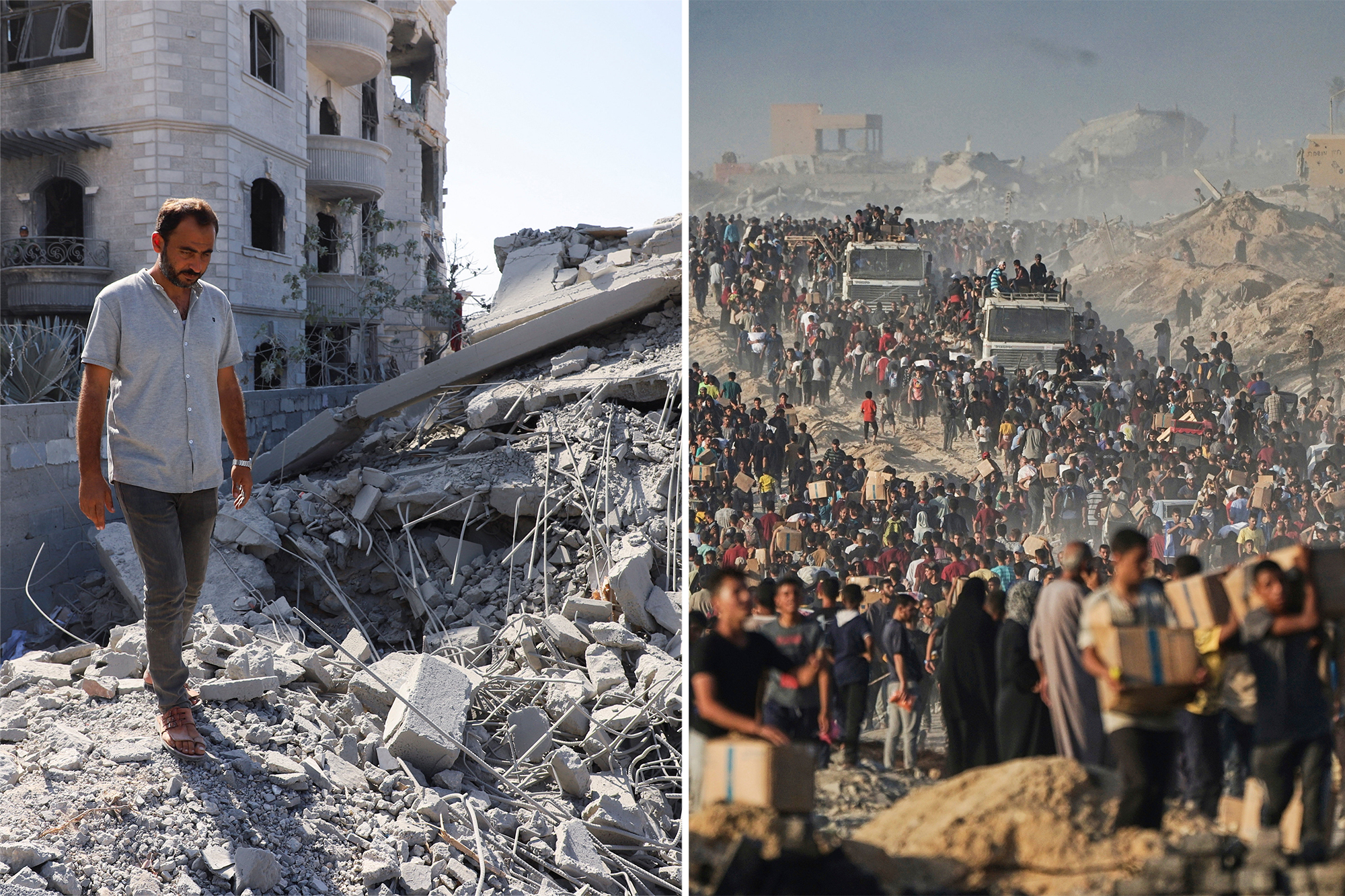World
Gaza’s Hidden Explosives Claim Lives, Clearing May Take Decades

War-torn Gaza is facing a critical humanitarian crisis as hidden explosive devices, many of which remain undetected, have claimed the lives of over 53 people and could take up to 30 years to clear, according to experts. The situation has been described as a “horrific, unmapped minefield” by Nick Orr, an explosive ordnance disposal expert with the humanitarian group Humanity & Inclusion. The ongoing conflict has left the region perilously littered with unexploded ordnance, posing a significant threat to returning civilians.
Orr likened the conditions in Gaza to British cities after World War II, emphasizing the long-term impact of the explosive remnants of war. “If you’re looking at a full clearance, it’s never happening,” he stated, indicating that the search for these dangerous devices will continue for generations. The challenges of effectively clearing the area are compounded by the rubble and destruction prevalent throughout the Gaza Strip.
According to Orr, the process of locating and removing these dangers is already underway. He is part of a seven-person team from Humanity & Inclusion that is surveying areas near essential facilities, including hospitals and bakeries. Their mission is to secure permission from Israeli authorities to safely dispose of the explosives they uncover. The team aims to neutralize these threats to prevent any potential reuse by militant groups.
As reported by the United Nations, the toll from hidden explosives is alarming, with numerous casualties already recorded. Aid organizations, including Humanity & Inclusion, have expressed concern that the UN’s estimates may significantly underestimate the true scale of the crisis. With hundreds more injured, the urgency for effective de-mining operations is critical.
The United Nations Mine Action Service has previously called for a comprehensive public awareness campaign in Gaza. This initiative would aim to educate returning civilians about avoiding suspicious devices as they navigate the war-torn enclave. De-mining efforts in densely populated areas are inherently complex and time-consuming. Historical precedents, such as the de-mining of Mozambique, which was officially declared mine-free in 2015, demonstrate the lengthy process involved. Mozambique’s experience, stemming from its War of Independence and subsequent civil war, required approximately 22 years to achieve clearance.
Moreover, the situation is not unique to Gaza. Vietnam continues to grapple with the remnants of conflict, with around 18% of its land still contaminated by unexploded ordnance nearly 50 years after the Fall of Saigon. These explosives have resulted in an estimated 40,000 fatalities and 60,000 injuries since 1975, according to the Vietnam National Mine Action Center.
The ongoing humanitarian crisis in Gaza, exacerbated by these deadly hidden explosives, underscores the urgent need for international support and effective de-mining strategies. As recovery efforts continue, the plight of civilians remains at the forefront, with experts warning that the dangers posed by unexploded devices will linger for decades to come.
-

 Politics1 week ago
Politics1 week agoDallin H. Oaks Assumes Leadership of Latter-day Saints Church
-

 Sports1 week ago
Sports1 week agoSteve Kerr Supports Jonathan Kuminga After Ejection in Preseason Game
-

 Business1 week ago
Business1 week agoTyler Technologies Set to Reveal Q3 2025 Earnings on October 22
-

 Lifestyle1 week ago
Lifestyle1 week agoDua Lipa Celebrates Passing GCSE Spanish During World Tour
-

 Entertainment1 week ago
Entertainment1 week agoZoe Saldana Advocates for James Cameron’s Avatar Documentary
-

 World1 week ago
World1 week agoD’Angelo, Iconic R&B Singer, Dies at 51 After Cancer Battle
-

 Health1 week ago
Health1 week agoCommunity Unites for Seventh Annual Mental Health Awareness Walk
-

 Science1 week ago
Science1 week agoChicago’s Viral ‘Rat Hole’ Likely Created by Squirrel, Study Reveals
-

 Lifestyle1 week ago
Lifestyle1 week agoKelsea Ballerini Launches ‘Burn the Baggage’ Candle with Ranger Station
-

 Health1 week ago
Health1 week agoRichard Feldman Urges Ban on Menthol in Cigarettes and Vapes
-

 Business1 week ago
Business1 week agoMega Millions Jackpot Reaches $600 Million Ahead of Drawings
-

 Business1 week ago
Business1 week agoMLB Qualifying Offer Jumps to $22.02 Million for 2024








